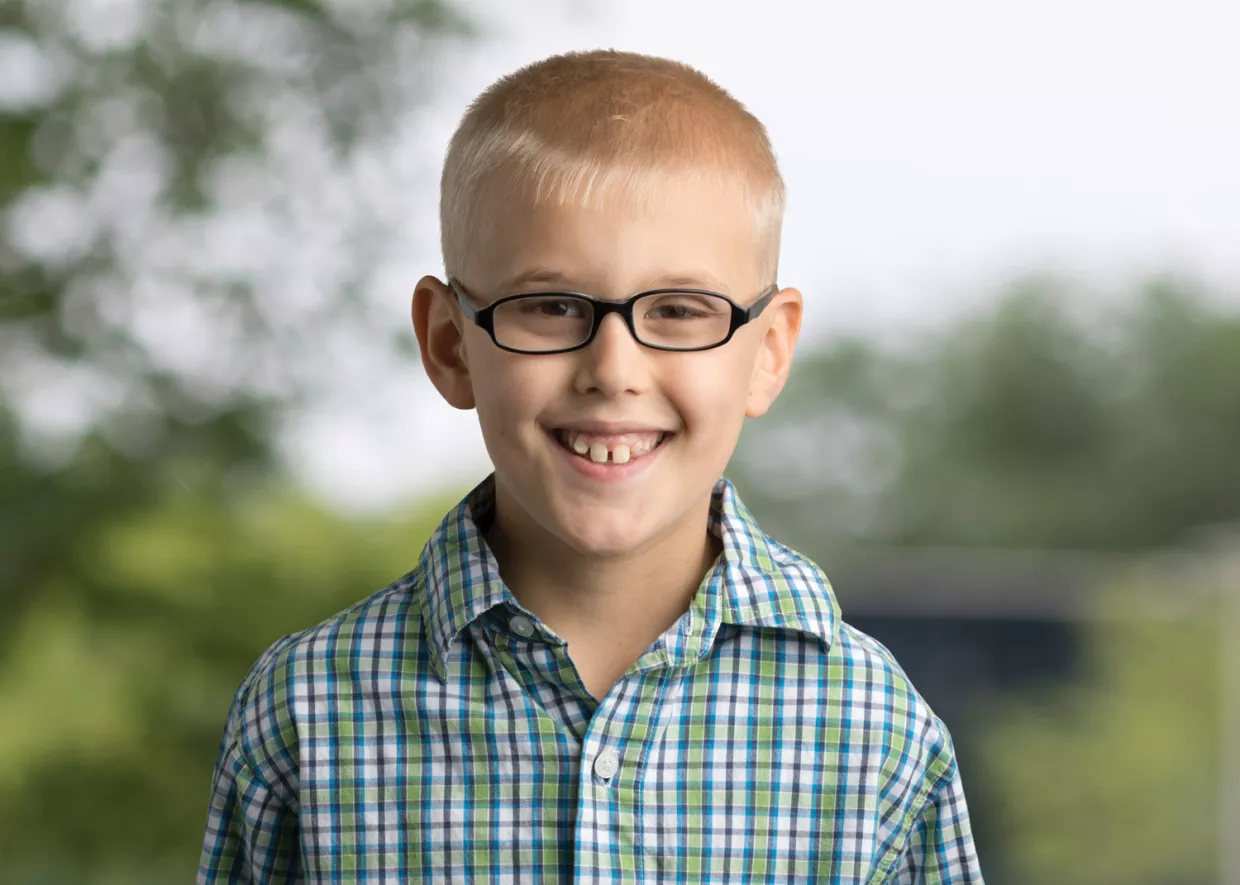Noah Hodgins

Soon after Noah Hodgins was born at a local hospital, his nurse noticed his coloring was off and that he was breathing very loudly. He was taken to the neonatal intensive care unit for testing.
“They thought he had just breathed in some fluid while he was born, and that over time it would clear out,” remembers Noah’s mother, Jackie. “They did a CT scan of his head while he was in our local hospital, and they did not see anything they thought was alarming.”
Noah went home after a week, but his condition soon worsened. When Noah was 12 days old, the Hodgins’ called their family doctor and requested another appointment to determine what was wrong.
“When we were preparing to go, he was in his car seat and he went into respiratory distress,” says Jackie. “I had to swoop him out of the car seat, and right on our dining room table I did resuscitative breathing on him.”
“I was scared to the depths of my soul that day,” adds Noah’s father, Isaac. “He was very, very sick and could’ve died right there in her arms.”
Noah was taken by ambulance to the local hospital. His doctors ultimately referred Noah to University of Iowa Stead Family Children’s Hospital, and he was immediately admitted to the pediatric intensive care unit.
Noah’s oxygen levels were plummeting, so he was put on a ventilator. His team also reviewed the CT scan performed at the local hospital.
“It was a little overwhelming at first, to see all of those people,” says Jackie. “As they started to explain their roles, it gave you a sense of peace that these people knew what they were doing. It was such a reassurance that they had all of those people there just for our little boy.”
“Noah’s pediatric ENT (ear, nose, and throat doctor, or otolaryngologist) was able to see what the problem was right away—it was a birth defect called congenital nasal pyriform aperture stenosis (CNPAS),” says Jackie. “Without having this specialty in that area, it wouldn’t be unusual for a physician to miss that.”
CNPAS is a rare and dangerous birth defect in which the nasal airways are obstructed in the front. Infants must breathe through their noses for the first several months; the bony openings in Noah’s nose were extremely narrow, leading to difficulty breathing.
“Normal things that you and I would take for granted–being able to close our mouth and breathe–those things don't come easily for Noah,” explains Jackie.
At 3 weeks old, Noah underwent his first surgery, where millimeters of bone were drilled away to open up his airway. Another scan revealed that Noah’s corpus callosum—the part of the brain that transfers motor, sensory, and cognitive information between the brain hemispheres—was thin.
“That has been helpful for us in his development, because we’ve seen some challenges when it comes to his motor skills,” says Jackie.
At 6 months old, Noah underwent another procedure to further open his airway. Since then, he’s been thriving. He has learned how to eat and breathe at the same time, has worked with speech pathologists and nutritionists to address eating and growing difficulties, and underwent physical and occupational therapy to address balance issues.
“It’s really neat to watch him have that tenacity and perseverance to do whatever he wants to do and overcome the obstacles he’s had to overcome in his life,” says Isaac.
The Hodgins family is grateful for the care Noah has received throughout his life at UI Stead Family Children’s Hospital.
“It’s nothing short of miracles that are being performed here every day,” says Isaac. “It’s the world-class facility and world-class people that make this place wonderful.”